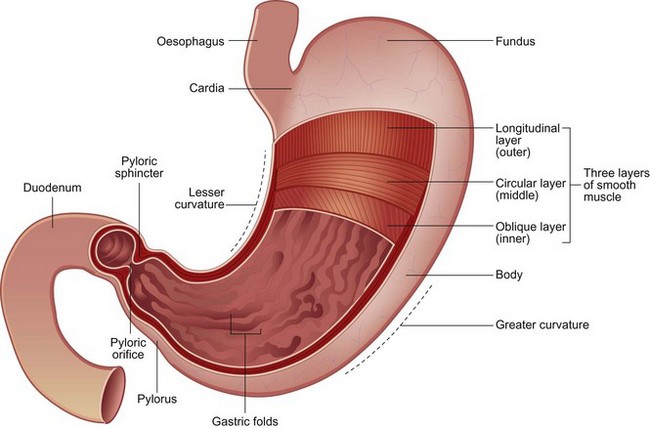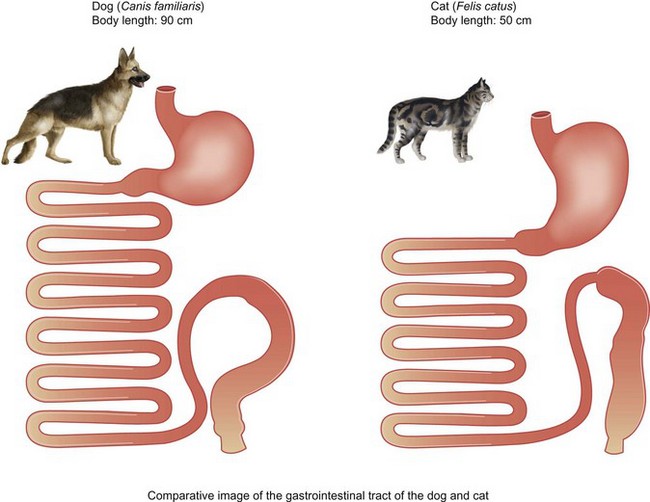9 Gastrointestinal physiology – the normal stomach and small intestines
The stomach
The stomach is divided anatomically into five regions: cardia, fundus, body, antrum and pylorus (Fig 9.1). Physiologically, the stomach has a proximal part which stores food temporarily and a distal part which regulates the release of hydrochloric acid, grinds food particles and controls the emptying of the stomach. The fundus of the stomach dilates in response to the entry of food in receptive relaxation which results in a decrease in fundic motor activity and pressure. As dogs tend to eat large meals as opposed to cats, which tend to eat frequent small meals, the storage capacity of the stomach is likely to be of greater importance to dogs.
Small intestine and pancreas
Most of the enzymatic digestion of food occurs within the small intestine. The small intestine is divided into the duodenum, jejunum and ileum, although no anatomic distinction divides one section from another. The small intestine is 1.80 to 4.80 m long in the dog and about 1.3 m long in the cat (Fig 9.2). The pancreas lies near the duodenal flexure (Fig 9.3).
Stay updated, free articles. Join our Telegram channel

Full access? Get Clinical Tree




